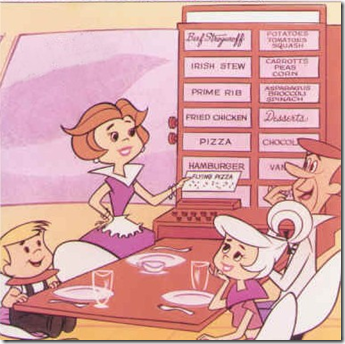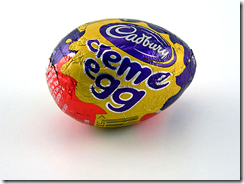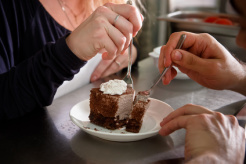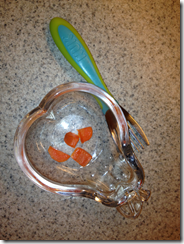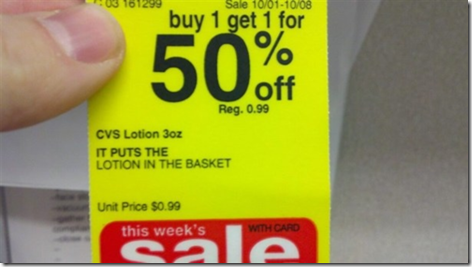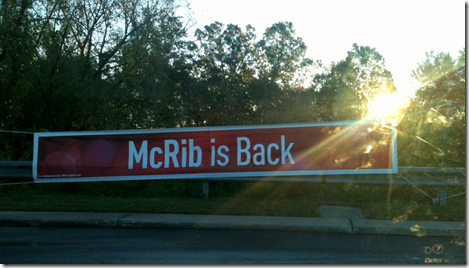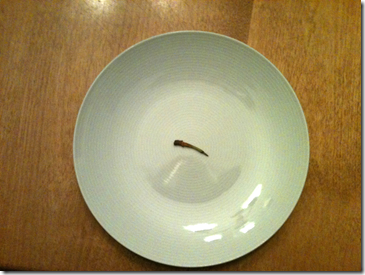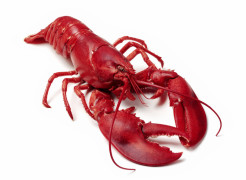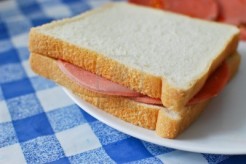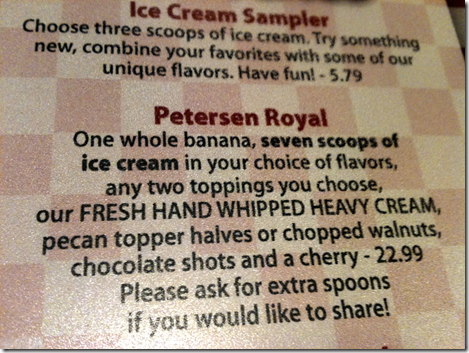Gratitude journal: The Cadbury Crème Egg
/Tonight I am grateful for the Cadbury Crème Egg. It is a perfect piece of candy in terms of its components, composition, and seasonality.
And I take the consumption of a Cadbury Crème Egg seriously. There is a right and a wrong way to eat one of these confectionary perfections. Please review these instructions before eating.
Gratitude journal (with a sprinkle of spite): Fountain soda and NOT COFFEE
/Tonight I am grateful for the joy of the unexpected Diet Coke that was delivered to me this afternoon. It was having an especially challenging day at school, mostly the result of an unexpected deadline and significantly reduced time frame in order to meet the demand, when my colleague surprised me with a large, plastic cup of fountain soda from Burger King.
There’s something about a fountain soda that makes it far superior to any Diet Coke found in a can or bottle.
It was just what I needed. My mood improved almost immediately and I found myself better able to power through the rest of the day, easily meeting my unexpected deadline and teaching the hell out of the rest of my day.
Sometimes it’s the little things that make all the difference.
Perhaps this is how most people feel about about coffee, except I have never spoken ad nauseum about my love for, need for or addiction to fountain soda. This is the first time I have ever written about the subject, and it was not expressed by something like this:
Need. Fountain. Soda. Now.
Or this:
If I don’t get a fountain soda soon, look out!
Or this:
This is what I call a two cup, 64-ounce fountain soda day.
So yeah, I was grateful for that fountain soda surprise today.
But more importantly, I’m also grateful that I’ve never spoken about coffee or any other beverage as if it is a legitimately interesting subject for discussion or something that anyone wants to hear.
Sick of your date asking to split a dessert? I have the solution that will change your life forever. Seriously.
/It’s a truth universally known that no man actually wants to share a dessert with his date. When it comes time to order dessert, it is quite common for a woman to suggest that the couple split a dessert.
My wife does this all the time, and I agree to the arrangement, as do most men, even though in our heart of hearts, we are screaming, “I want my own dessert, damn it! Get your own slice of pie and keep your mitts off mine!”
When it comes to ordering dessert, women are their mothers and men are the six-year old versions of themselves.
But now I have a solution, and it shames me to think that it’s taken this long to figure this out:
If the lady asks to split a dessert, happily agree to the division and then order a dessert of your own as well.
It’s perfect.
The six-year old inside a man’s body gets his own dessert plus a half of another while the lady’s request is adequately granted as well.
It’s actually a better scenario than if both parties simply ordered their own dessert.
In fact, it’s not even a solution to the problem. It’s an upgrade on life.
The greatest sacrifice of all
/I gave my daughter the last black and white cookie tonight after dinner. She began eating but then spit out the partially chewed cookie onto her plate, saying, “No! This is Mommy’s cookie! She loves black and white cookies. She can eat it when she gets home!” It was too late to save the cookie for Elysha. Even the un-chewed portion had been mangled by her little hands.
But damn it was sweet. A little disgusting, too. But very sweet.
Four tiny bites of carrot ruined my night.
/I’m annoyed with my daughter tonight. Had she eaten four tiny pieces of carrot, she could ended dinner with a delicious black and white cookie, straight from William Greenberg Desserts on Madison Avenue, makers of the best black and white cookies on the planet. But no. She refused, rather vehemently I may add, and therefore she gets no dessert.
It wasn’t the whining or the crying or the overly aggressive shoving aside of the plate or even the lack of vegetables in her diet that bothered me.
It was the inability to see the pure joy that she experiences while eating a cookie. I love a black and white cookie, too, but I love watching my daughter eat one even more.
The smiles. The laughs. The chocolaty fingers. The extreme focus on the cookie itself. The repeated declarations of love for the cookie.
Bearing witness to this display of sheer happiness is better than any dessert that I could consume myself (except maybe ice cream cake). Yet I was denied that pleasure tonight because she refused to eat four stupid little carrots.
As soon as she is in bed, I’m going to go downstairs and eat a black and white cookie.
And it’s going to taste even better than usual because it’s going to be served with a heaping side dish of spite.
Keeping it off
/A new study conducted by the National Weight Control Registry examined about 3,000 men and women who managed to maintain the bulk of their weight loss for at least 10 years. Over the last two years, I have managed to lose a total of 53 pounds and have yet to put any of the weight back on.
Nor will I.
Participants in the NWCR study identified the following strategies to assist in maintaining weight loss:
- Count calorie or fat grams or use a commercial weight-loss program to track food intake.
For the first year, I used an iPhone app called Lose It in order to track my calories, but I eventually became proficient enough to count calories without the help of technology. I can now roughly determine the number of calories for almost any meal and can quickly total the day’s calories mentally.
- But learning to count calories was essential to my success. It cannot be underscored.
- Follow a low-calorie, low-fat diet. They take in about 1,800 calories a day and less than 30% of calories from fat.I never followed this rule. I simply counted calories. I also take in up to 3,000-4,000 calories per day but compensate by exercising daily.
- Eat breakfast regularlyAlways.
- Limit the amount they eat out. They dine out an average of three times a week and eat fast food less than once a week.I did not follow this rule either. Again, I simply counted calories. If I was going to eat a fast food meal for dinner, I ate a light lunch.
Also, I eat fast food almost everyday. My breakfast is almost always an Egg McMuffin, hash brown and Diet Coke.
- Eat similar foods regularly and don't splurge much on holidays and special occasionsIt’s true that I often eat similar foods. The same breakfast almost everyday and oftentimes the same lunch. But I was never concerned with splurging on holidays or special occasions. If I did so, I ate smaller meals in the following day or exercised more.
- Walk about an hour a day or burn the same calories with other activitiesI exercise every day, almost without exception, for at least 30 minutes.
- Watch fewer than 10 hours of TV a weekI watch far fewer than 10 hours of TV most weeks.
- Weigh themselves at least once a weekI weigh myself daily.
I’m often asked how I managed to lose so much weight. My answer is simple:
I eat a little less, and I exercise every day.
I get the sense that this answer does not satisfy a lot of people.
I think they’d rather hear that I ate bacon and tree bark and took hot yoga classes for six months.
What do Hannibal Lecter and I have in common?
/It looks like I may have found a wine that I like.
A little at least.
If so, it means another resolution is knocked off my list.
It’s chianti.
I’ve had two glasses so far. I liked the first and thought the second was palatable.
I know nothing about chianti. It is dry? Sweet? Cheap?
I don’t know.
The only thing I know about chianti is that Hannibal Lecter likes to drink it with fava beans and census takers.
Which is extra creepy considering the image my editor sent me this week:
What do lobsters and cul-de-sacs have in common?
/I like it when perceived extravagances and status symbols are proven to be not so extravagant and rather artificial. A century ago, lobsters were so plentiful and inexpensive that they were routinely fed to domestic servants and other low-wage workers. The servants detested these “cockroaches of the sea” so much that their employment agreements often demanded that lobster be served no more than twice a week.
Until recently, lobster was considered an ill-tasting, ugly-to-look-at, impossible-to-eat food item only suitable for the hired help.
Then, thanks to decades of over-fishing, lobster populations plummeted.
As the scarcity of lobsters rose, prices increased, and before long, the “cockroach of the sea” was considered a delicacy.
Not because they tasted better or were any more appealing, but simply because they cost more.
I do not eat lobster. I don’t mind the taste of lobster but find the process of eating a lobster slightly disgusting and thoroughly unrewarding.
A lot of effort for a small amount of average-tasting food.
Any food that is normally dunked in butter before eaten cannot be that good.
But when I hear people extol the virtue of lobster, I cannot help but think of how their love for this food is not based on the food itself but the time in which they live and the modern-day price of the product.
Nothing more.
I recently read a piece about cul-de-sacs that gives me a similar pleasure.
The cul-de-sac has long been viewed as a suburban ideal, the place where your children can play in the street in relative safety and neighborhoods can once again become the close-knit communities that they once appeared to be on black-and-white television.
Homes located within cul-de-sacs are almost always priced higher than those in less idealized locations, and many home buyers specifically target cul-de-sacs when looking to purchase a home.
And yet data compiled from studies on traffic patterns and the frequency of accidents shows that cul-de-sacs aren’t as safe as you might think.
“A lot of people feel that they want to live in a cul-de-sac, they feel like it’s a safer place to be,” Marshall says. “The reality is yes, you’re safer – if you never leave your cul-de-sac. But if you actually move around town like a normal person, your town as a whole is much more dangerous.”
It turns out that if you live in a one-cul-de-sac town, you’re probably okay.
But if the suburban sprawl of your hometown is littered with cul-de-sacs and similarly designed streets, you’re children are in more danger than those living in the Bronx, at least when it comes to traffic.
Perceived extravagance fails again.
Your title sucks, and your ideas about food are sexist and condescending
/My wife came home with this book today:
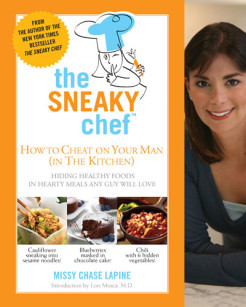
The Sneaky Chef: How to Cheat On Your Man (in the Kitchen): Hiding Healthy Foods in Hearty Meals Any Guy Will Love!
Forget the fact that the title includes two colons, one set of parenthesis, an exclamation point, and 22 words.
Doesn’t this book strike you as a little sexist?
It assumes that the woman in the relationship will be the designated chef while simultaneously denigrating the nutritional choices of men and implying that deceit is necessary in order to get them to eat well.
I don’t like it.
I already spent an entire childhood dodging my mother’s ham-handed attempts at slipping vegetables into the mashed potatoes.
I don’t need Missy Chase Lapine making adulthood just as annoying.
Is a bologna, cheese, and catsup sandwich reason enough to run away from home?
/I once told my wife that when I was a kid, my siblings and I were served bologna and catsup sandwiches for lunch every day during our summer vacation. No cheese. No other condiments. No potato chips. No dessert.
Just bologna, catsup and white bread.
One sandwich per kid.
My mother would apply the catsup on our sandwich in the shape of a smiley face, perhaps to distract us from the paucity of nutrition contained therein.
Oddly enough, I didn’t mind this meal very much. I didn’t know enough at the time to complain, I guess.
My wife said that if her mother had ever tried to serve a bologna and catsup sandwich, she and her sister would’ve probably left home and never returned.
I don’t even think she’s exaggerating.
McDonald’s makes Happy Meals healthier, regardless of The Daily Beast’s uncertainty over the matter
/The Daily Beast tweets: McDonald’s Adds Fruit to Happy Meals: In attempt to make food healthier. http://thebea.st/nV5a2p #cheatsheet
In attempt to make food healthier?
Since when is fruit (and vegetables, which have also been added to the Happy Meals) not a healthier choice?
Is there any chance that adding fruit and vegetables (and reducing the number of French fries, which McDonald’s is also doing) will not make their Happy Meals healthier?
Is it even possible for McDonald’s to fail in this healthier attempt?
Shouldn’t the headline read something like:
McDonald’s Adds Fruit to Happy Meals and makes food healthier.
Or…
McDonald’s Adds Fruit to Happy Meals and yes, Happy Meals are now healthier. No doubt about it. Oh, and they added vegetables, too. And reduced the number of fries. And also the overall calories as a result. Yup. A healthier choice. No attempt here. Just downright certainty.
Rethinking my assault on the institution of coffee
/A follow-up to my attack on the institution of coffee from yesterday: A reader on Goodreads responded to my post with the following:
“Coffee is also a ritual, a comfort. I know I can get through a tough commute, a tough meeting, a tough report or a tough day in general if I have that coffee.
I wonder if the bigger problem is the over-sharing that goes on in social media?”
She might be onto something. As I was forced to point out several times yesterday, my post was not an attack on coffee or the act of drinking coffee, but on the way in which people insist on talking about it, tweeting about it and raising it's status in society to unreasonable levels.
It was an assault on the institution of coffee, which I thought I made pretty clear in the title of the post.
Enjoy your coffee as much as I enjoy my Caffeine-free Diet Coke, but do I have to hear about it every damn day?
So I think the Goodreads’ reader is right, or almost right. It’s not the over-sharing that bothers me, but the unnecessary-sharing.
The boring-sharing.
For example, I watched a woman ask for 12 creams and 12 sugars in her small coffee this morning at Dunkin Donuts (I was getting coffee for my wife).
As I stood in line, I tweeted about it, because I thought it was a highly unusual and slightly insane request. I also noted the courage it must have taken to make a request like this.
And my tweet got a response. People couldn't believe it. It made a guy who drinks his coffee black scoff in disgust. It made another one laugh.
The aforementioned reader on Goodreads even responded:
12 creams and 12 sugars means it was no longer coffee, more like a vaguely coffee-tinted beverage.
Then I laughed.
This seemed like the right kind of coffee-sharing situation to me. It was unique. Odd. Possibly amusing. Maybe even conversation-inducing.
"Need. Coffee. Now." or "This is going to be a three-cup day!" or "I need my Starbucks right this minute!" are none of these things.
They are nowhere close to these things.
These kinds of comments only serve to glorify the need for coffee, and as I’ve said before, I get it.
You all need your coffee.
Fine. Drink up.
And please shut up unless you have something new to say.
My personal assault on the institution of coffee
/I am constantly annoyed by the Facebook updates, Twitter posts and verbal declarations regarding the need for coffee, the desire for coffee and the importance of coffee in everyday life. It’s a beverage, people.
Only it’s not.
Somehow it’s also become a societal totem of a harried lifestyle. The prized moniker of both the inundated worker bee and the ambitious titan of industry. A demarcation of imposed diligence and prized productivity.
And at the same time, it’s also become an acceptable means of spending leisure time.
“Let’s get a cup of coffee” has become equivalent to “Let’s take a hike” or “Let’s go see a movie” or “Let’s go throw a Frisbee in the park.”
I find all of this utterly insane.
Nevertheless, I decided to take a step back from my hardened stance on the mysterious brew and be a little more reflective when is comes to my position. I wanted to determine why these constant coffee declarations bother me so much.
Why “This is definitely a two cup day!” and “Need. Coffee. Now.” makes me want to punch said coffee drinkers in the face.
I’ve come up with three possibilities:
- I don’t drink coffee, nor have I ever even tasted coffee, so I can’t possibly understand its impact on a coffee drinker’s everyday life.
- The need for coffee is so often expressed that it has become exceedingly repetitive, virtually meaningless and utterly cliché.
- The apparent physical need for coffee (or any other substance) is a human weakness that I detest and avoid at all costs.
All three possibilities may play a role, but I’m leaning toward #2.
I am, however, willing to listen to opposing viewpoints.
Ice cream for dinner!
/That’s right. As my wife and I were finishing our walk with the dog, she turned to me and said, “How about some ice cream for dinner tonight?
She didn’t have to ask twice.
And I strongly suggest that everyone try this at least once.
As adults, we sometimes forget the when-I-grow-up promises that we made to ourselves as children. The seemingly infinite possibilities that would one day come with the freedom of adulthood.
Ice cream for dinner was probably a childhood promise for many of us, and for good reason.
Thirty minutes later, Elysha, Clara and I were sitting in a local ice cream parlor, scanning the menu, when I came across this item:
The Petersen Royal
Please note that there is $23.00 worth of ice cream in this monster, and they suggest that you ask for extra spoons if you would like to share.
If you would like to share?
Even if the seven scoops of ice cream, the whole banana and the assorted toppings aren’t enough to stop a person, isn’t the $23.00 price point barrier enough in terms of trying to eat this alone?
